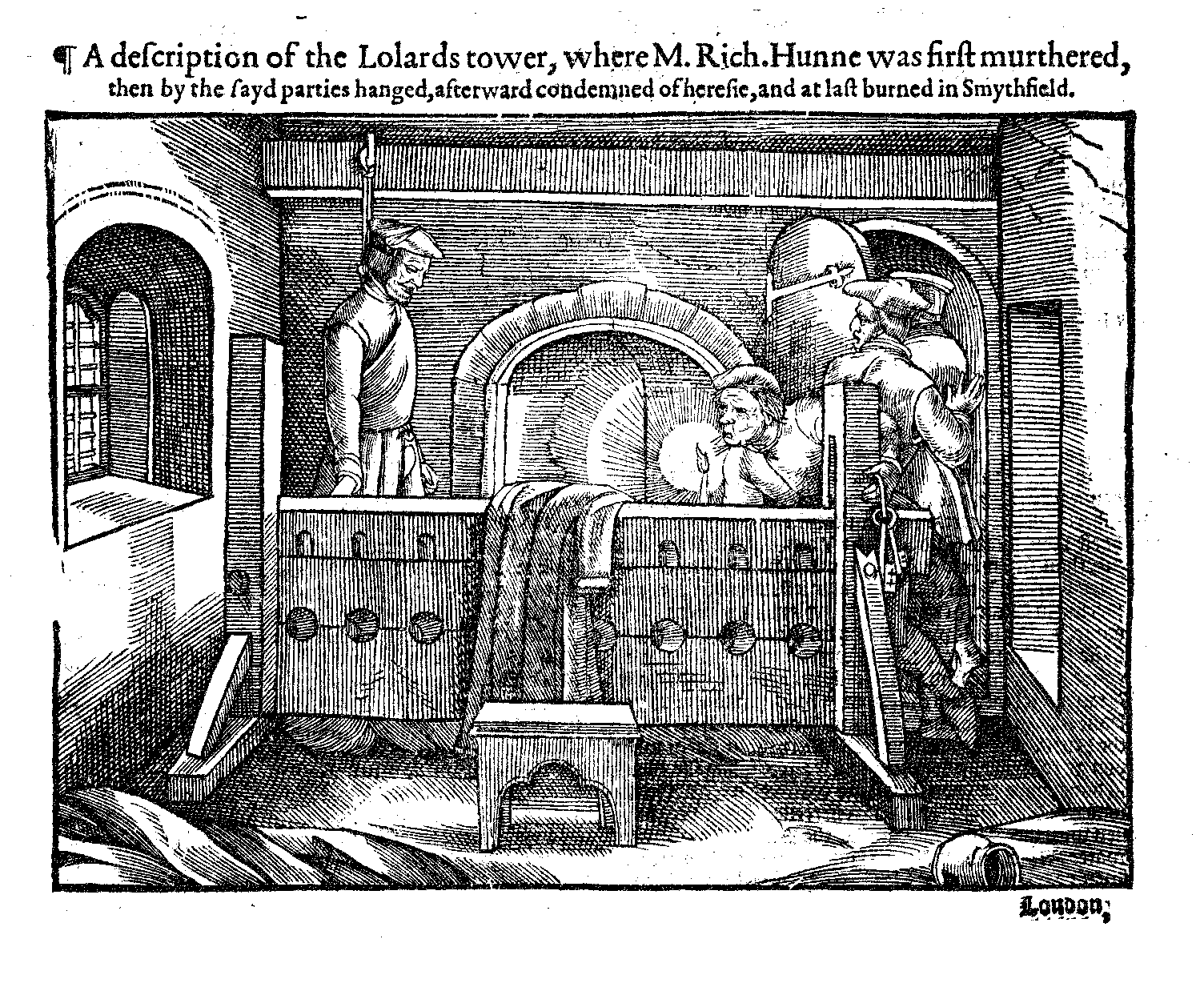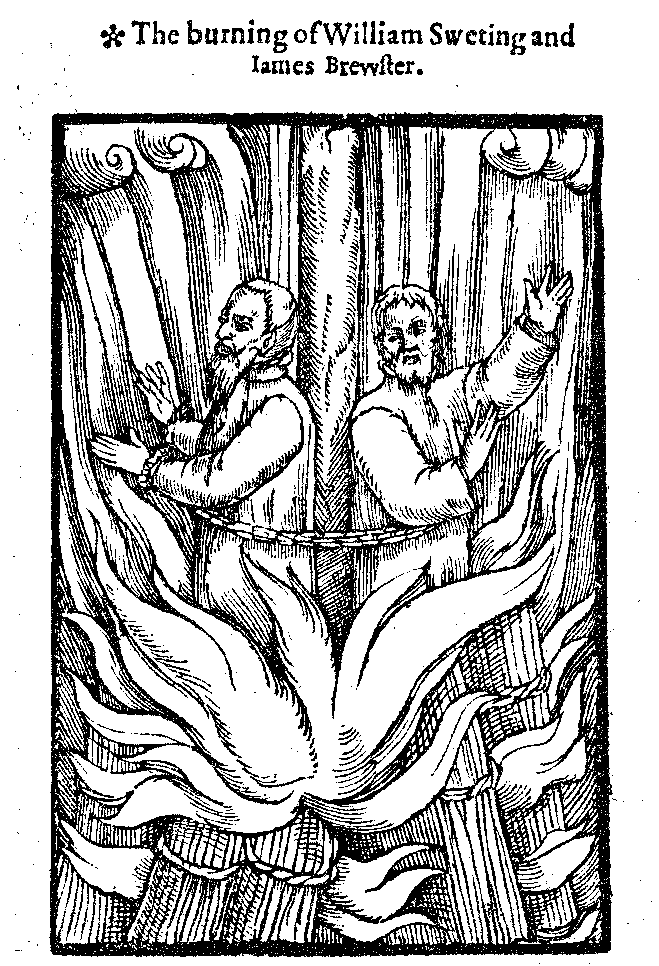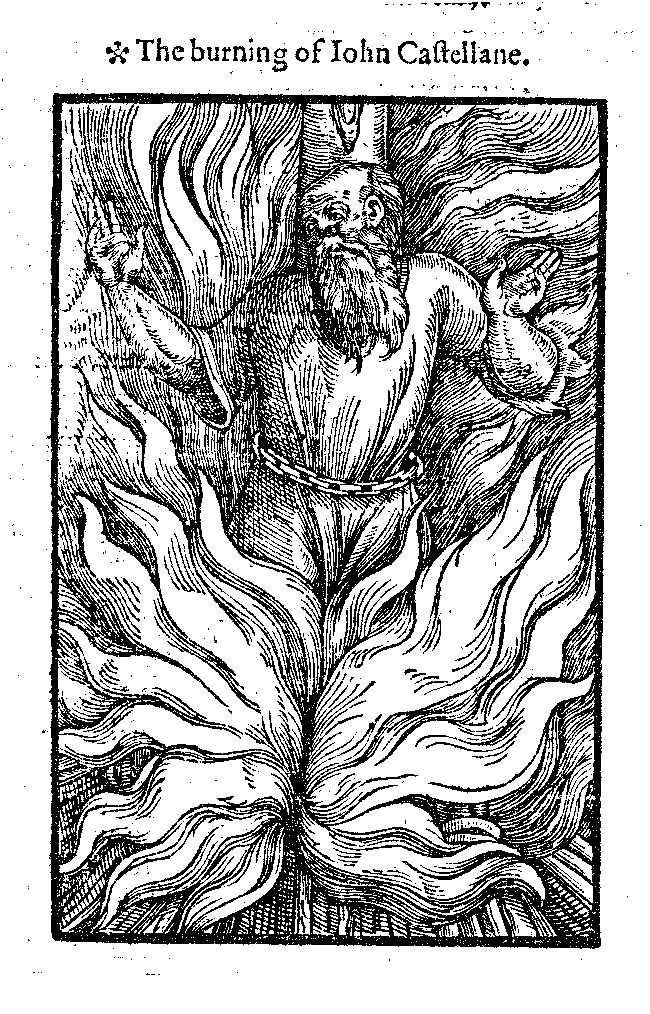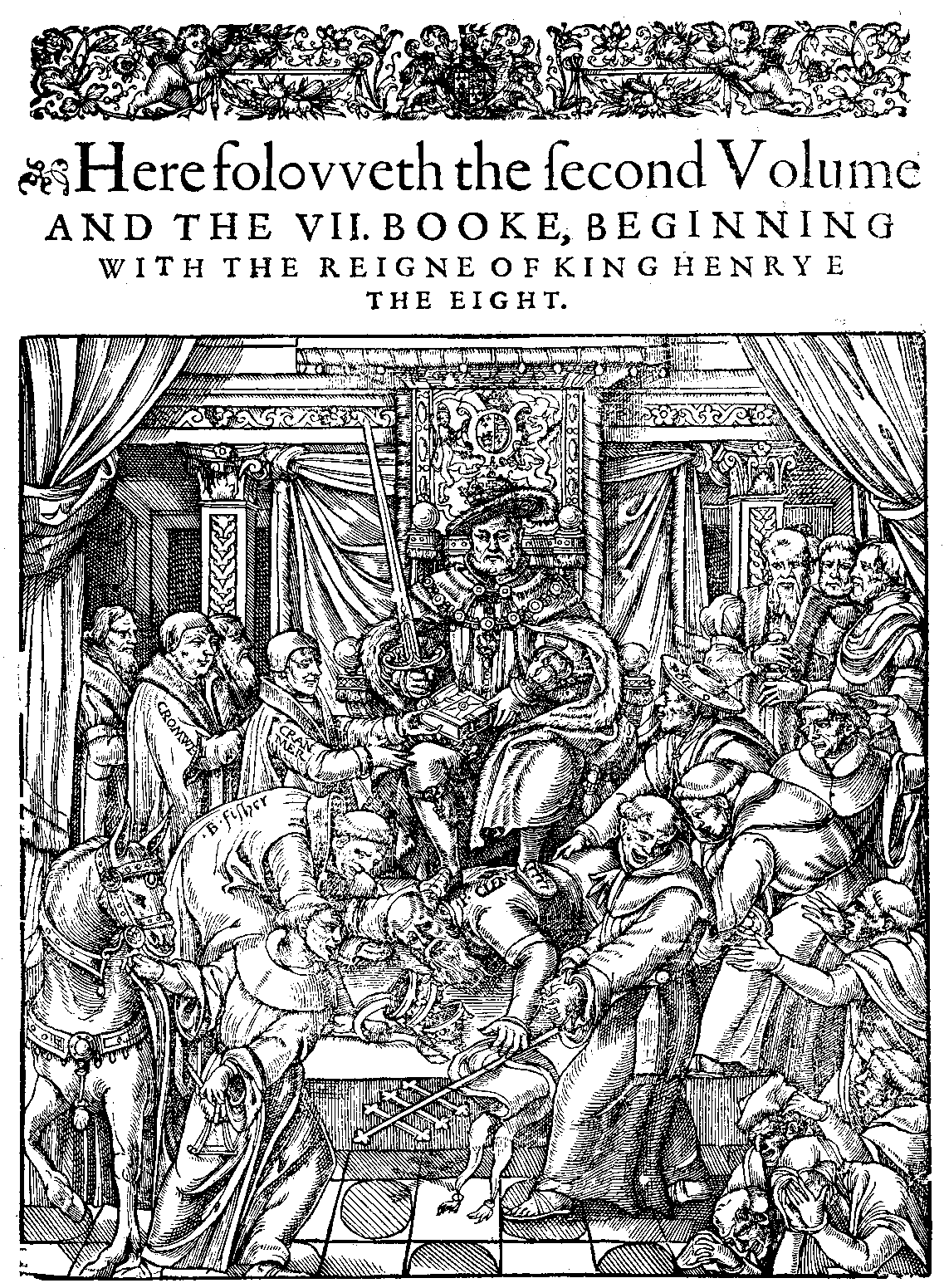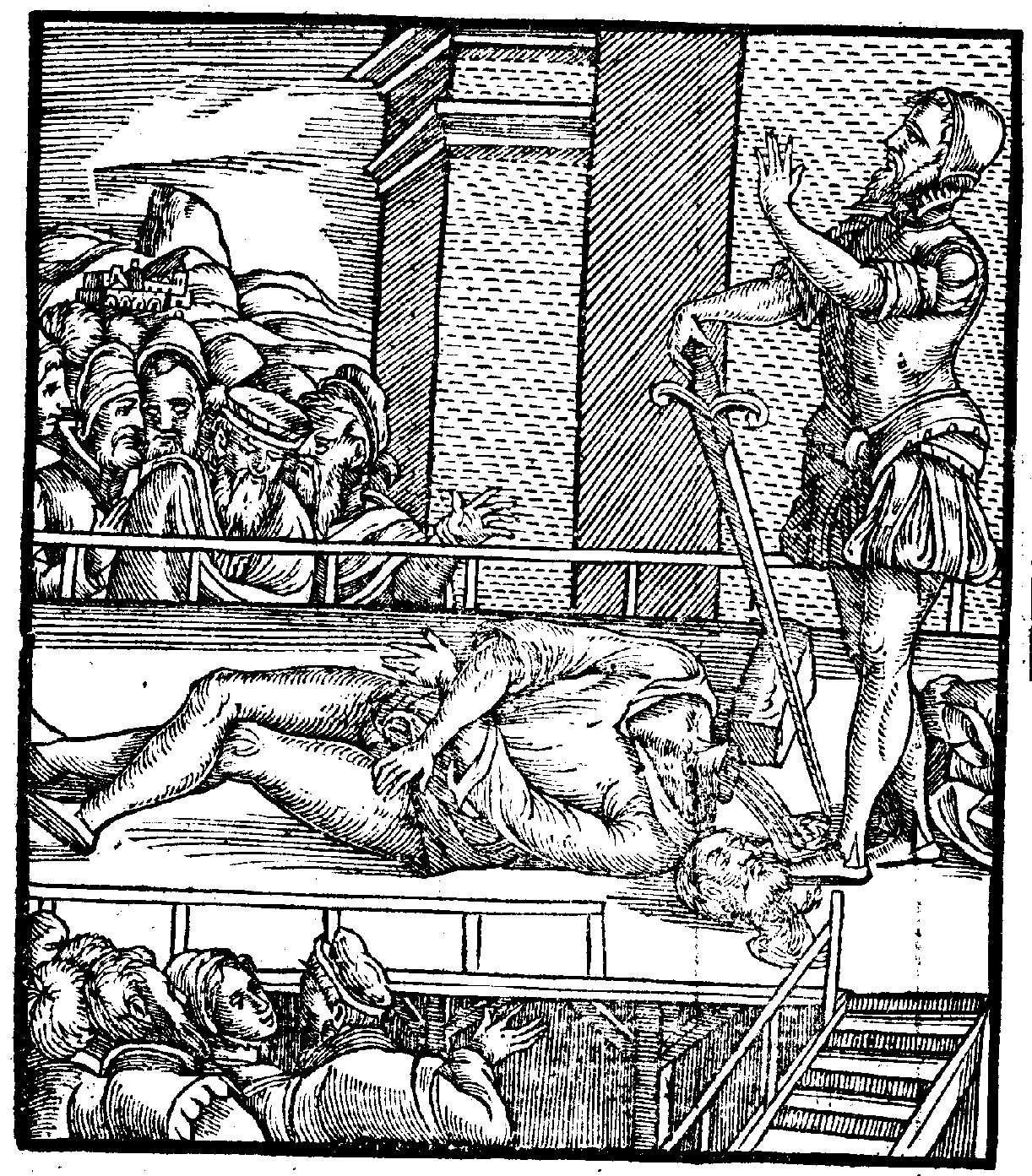Commentary on the TextCommentary on the GlossesCommentary on the WoodcutsLatin/Greek TranslationsCattley Pratt ReferencesThematic DivisionsTextual TranspositionsTextual VariationsGlossary of PeopleGlossary of PlacesEssaysBibliographyAbbreviations
A description of the Lolards tower, where M. Rich....The burning of Iohn Stilman.The burning of Thomas Man.The burning of William Sweting and Iames Brewster.The burning of Christopher Shoomaker.Centum reuolutis annis Deo respondebitis. Post centum...The burnyng of Henry Voes and Iohn Esch, Fryers Augustines.The burning of Iohn Castellane.The Martyrdome of Wolfgangus(No title) The Martyrs of Germaine (decapitation of...The Marytrdome of Gyles.The martyrdome of Richard Feurus.The story of a Christian Iewe in Constantinople martyred...The Pope suppressed by K. Henry the eight.The Martyrdome of Iohn Browne (misheaded 'The burning...God manifesting hys Gospell
Commentary on the Woodcuts for Book 7
A description of the Lolards tower, where M. Rich. Hunne was first murthered, then by the sayd parties hanged, afterward condemned of heresie, and at last burned in Smythfield.
This woodcut shows the body of Hunne hanging to the left of the cell, while his killers exit: one of them is depicted blowing out a candle, placed on the stocks, as he leaves. This scene illustrates the belief of many (including Foxe) that Hunne was murdered. The coroner's inquest into Hunne's death (reprinted by Foxe) reported that 'an ende of a wax candel ... we found sticking upon the stockes fayre put out, about seven or eight foote from the place where Hunne was hanged, which candle after our opinion was never put out by him.' (1563, p.391.) CUL copy: this image contains some detail added in ink. The man blowing out the candle wears a blue tunic with yellowy-orange hose. The next man is in black with pink sleeves; the other is in purple. Note that there is considerable bleed through on the right of this image. WREN copy: the outfits are more muted in this copy: Hunne is in blue, with purple hose, but the perpetrators are in dark, charcoal colours, almost blending into the background, making the image appear altogether much more sinister.
1563 Edition, page 442 | 1570 Edition, page 970 | 1576 Edition, page 804 | 1583 Edition, page 830[Back to Top]The burning of Iohn Stilman.
John Stilman, who had a long heretical career behind him, had come to the attention of the authorities eleven years before he was eventually rearrested and condemned in 1518. A book owner, who moved between different areas, the charges against him included his praise of Wiclif's Wicket. He is among the early sixteenth-century Lollards whom we know about from both Foxe and official records.
1570 Edition, page 980 | 1576 Edition, page 813 | 1583 Edition, page 839[Back to Top]The burning of Thomas Man.
Thomas Man, a missionary preacher who, with his wife, was credited with converting hundreds to Lollard views, was based at Amersham, though he was also went to Colchester and Newbury, before being finally arrested and burned at Smithfield in 1518. Man, who had been apprehended and examined six years earlier, was imprisoned for some time. He grew gravely ill while incarcerated, Foxe blaming his weakness for his abjuration at that point. By 1518, however, his views were well known and he was rearrested. On his way to his execution, he challenged the authority of the sheriff of London, claiming that he had no legal right to put him to death. His execution went ahead soon afterwards, despite the sheriff having no articles or indentures to read against him.
1570 Edition, page 982 | 1576 Edition, page 815 | 1583 Edition, page 841[Back to Top]The burning of William Sweting and Iames Brewster.
William Sweeting (alias Clerke) was brought to London to be examined with George Laund, prior of St Osyth's near Colchester. He abjured and did penance in Colchester. In 1511 he came again to the attention of the authorities, was brought before the bishop and his belongings searched for heretical literature. He was eventually condemned. Brewster was a carpenter in the parish of St Nicholas in Colchester. He could neither read nor write but he had already come to the attention of the authorities previously, in 1505. When rearrested it emerged that Brewster had been listening to readings given by Sweeting in the fields and that he shared his doctrinal views. The two men were executed together. Andrew Hope has shown the long association of the two men and the ways in which they were able to instruct and convert their social superiors and employers, including Geoge Laund, the Forge family, and Lady Jane Young: a revealing demonstration of how Lollard opinions could move up the social scale. CUL copy and WREN copy: they are dressed in white.
1570 Edition, page 983 | 1576 Edition, page 816 | 1583 Edition, page 842[Back to Top]The burning of Christopher Shoomaker.
Shoemaker was of the parish of Great Missenden. He would read passages of a doctrinal text to one John Say in the parish, urging him to renounce his belief in Catholic doctrine. Shoemaker was burned at Newbury in 1518.
1570 Edition, page 984 | 1576 Edition, page 817 | 1583 Edition, page 843[Back to Top]Centum reuolutis annis Deo respondebitis. Post centum annos vos omnes cito.
For these images, see above 'The true plate of Hus and Hierome'. [1570, p. 912] CUL copy: metallic colour to the edges (probably indicates silver detail, now worn, since this appears to be the base colour used prior to applying silver). Note that this additional detail was carefully added, since it does not envelope the writing. WREN copy: there is no metallic colour here.
1570 Edition, page 1007 | 1576 Edition, page 839 | 1583 Edition, page 865[Back to Top]The burnyng of Henry Voes and Iohn Esch, Fryers Augustines.
CUL copy: considerable detail is added in ink to the face and hands.
1570 Edition, page 1044 | 1576 Edition, page 872 | 1583 Edition, page 898[Back to Top]The burning of Iohn Castellane.
CUL copy: detail is added in ink to the features in this illustration.
1570 Edition, page 1051 | 1576 Edition, page 877 | 1583 Edition, page 904[Back to Top]The Martyrdome of Wolfgangus
CUL copy: detail is added in ink to the features in this illustration.
1570 Edition, page 1055 | 1576 Edition, page 881 | 1583 Edition, page 907[Back to Top](No title) The Martyrs of Germaine (decapitation of George Scherrer)
1570 Edition, page 1058 | 1576 Edition, page 884 | 1583 Edition, page 911[Back to Top]The Marytrdome of Gyles.
1570 Edition, page 1060 | 1576 Edition, page 886 | 1583 Edition, page 913[Back to Top]The martyrdome of Richard Feurus.
1570 Edition, page 1085 | 1576 Edition, page 911 | 1583 Edition, page 938[Back to Top]The story of a Christian Iewe in Constantinople martyred by the Turkes.
This example of a narrative small cut succeeds in conveying the text's narrative as well as local colour in the Turks' appearance in the confined space of the two scenes. CUL copy: additional flecks of blood are added in red to this image.
1570 Edition, page 1145 | 1576 Edition, page 969 | 1583 Edition, page 996[Back to Top]The Pope suppressed by K. Henry the eight.
The fresh format and illustrative input of the 1570 edition included grand new woodcuts to mark important phases of the remodelled text. Important among these was the image of Henry VIII triumphing over the pope. Regal assurance and papal dismay are here affirmed in full. The king himself, enthroned in state, central and corporeally impressive, presides over the collapsing and confused posse of papal supporters who are doing their best to rescue the falling Pope Clement who has become the royal footstool. The calm that prevails above, as Archbishop Cranmer, supported by Cromwell, receives the Bible at the king's hands, is matched by the confusion below of Bishop Fisher and the cardinal and frenzied friars who cling onto their triple cross as the papal mitre falls apart, and a hasty getaway on the caparisoned horse remains the only hope. Despair (witness the group bottom right) is all that remains for papal pomp and presence. The king himself, authorised by and authorising the book of scripture, seated in state on his high throne like another Solomon (to whom Chancellor Audley likened him in parliament in June 1536), was to be seen as the image of justice. In 1570 and 1576, this woodcut was used to illustrate the events of 1534 which it portrayed. But in 1583 it was given a more declaratory position, marking the opening of Book VIII on the reign of Henry VIII at the start of the second volume. The expulsion of the pope becomes the key to the achievements of this reign, and the religious revolution is announced at its start. WREN copy: note that gold detail is provided in this copy (but not in CUL); for example, the sword, book spine, arms (which include blue), and horse's bridle are all detailed in gold.
1570 Edition, page 962 | 1576 Edition, page 797 | 1583 Edition, page 823[Back to Top]The Martyrdome of Iohn Browne (misheaded 'The burning of Thomas Man')
The misattribution to Thomas Man for whom this cut had been used five hundred or so pages earlier (B) p. 943 (with precisely this letter head) is peculiar since is had also thereafter served Richard Feurus (B) p. 1046, and Richard Bayfield (B) p.1165 with correct headings. This block is singular among the small woodcuts introduced in 1570 in lacking its top framing line. It was also used for WilliamTailour (B) p. 781 and Thomas Wattes (B) p. 1771
1570 Edition, page 982 | 1576 Edition, page 815 | 1583 Edition, page 841[Back to Top]God manifesting hys Gospell
In a series of examples of continental martyrs, for which he drew on Flacius Illyricus, Foxe included the story of George Scherrer of Salzburg, noteworthy for the strange miracle that proved his fidelity. Having been granted the mercy of beheading before burning, he promised to give a sign of his true faith. The small woodcut (possibly from an outside source, since it is unusual in size and style) shows the marvel. After the beheading, those present saw in slow motion (taking as long as one might to eat an egg) the decapitated body turn over and cross the right leg over the left.
1570 Edition, page 1058 | 1576 Edition, page 884 | 1583 Edition, page 911[Back to Top]
